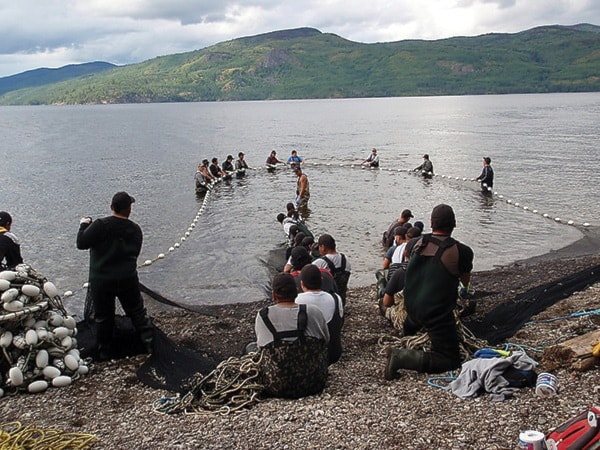The B.C. Supreme Court has not yet reached a decision regarding Pacific Booker Minerals (PBM) law suit which challenges the province’s 2012 rejection of the proposed Morrison copper and gold mine project.
The project as proposed would have been located 35 kms north of Granisle, near the shores of Morrison Lake, which feeds into Babine Lake.
The PBM law suit alleges that the province acted unfairly when it denied PBM environmental approval for its mine project on Oct. 1, 2012.
The provincial environmental assessment process had concluded with a report detailing how the project met or exceeded required environmental considerations as well as satisfying the duty to consult with First Nations.
The environmental assessment process, which began years before the province filed its report, had a rocky start with Lake Babine Nation (LBN) who rely on the sockeye salmon harvest in Babine Lake for sustenance and commercial use.
The close of the environmental review process saw strong and vociferous opposition from the Skeena Fisheries Commission (SFC), a Kispiox-based fisheries resource centre supported by several area First Nations (see Lakes District News Nov. 14, 2012 for more information).
Without specifically acknowledging the opposition of the SFC, the executive director of the B.C. environmental assessment office (EAO) did not follow the recommendations of his staff environmental assessment report and instead recommended against the project.
Ministers Terry Lake and Rich Coleman followed the executive director’s recommendation and, on Oct. 1, 2012, denied the project an Environmental Assessment Certificate based on threats to sockeye salmon population in the Skeena watershed, threats to the long-term health of Morrison Lake, and the possibility of long-term liabilities that might be assumable by the province.
With this year’s low sockeye salmon return throughout the Skeena watershed, including Babine Lake, the effects of past mining activity near Granisle have been called into question.
On July 25, 2013, LBN Chief Wilf Adam called into question the effects resource extraction has had on the Babine Lake fishery.
“They dump mine tailings into our lake, [and] strip forests from along our streams,” Adam said. He described this year’s salmon return as the lowest in ‘living memory’.
Erik Tornquist, PBM director, recently called attention to a 2012 Fisheries and Oceans Canada report that challenges the notion that the sockeye return has never been as low as this year, or that previous mining activity should shoulder the blame for the low return.
The report, titled ‘Update Assessment of Sockeye Salmon Production from Babine lake, British Columbia’, was prepared by the Prince Rupert Fisheries and Oceans Canada North Coast Stock Assessment Unit.
It reports that the actual lowest recorded sockeye return on Babine Lake was in 1955, with a return of only 71,352 sockeye.
This was previous to the operation of the Granisle mine from 1966 to 1982, and the Bell mine from 1972 to 1992. Some of the largest returns, according to the data, occurred during the active life of the Bell mine.
The report cites the complexity of the factors influencing sockeye return on Babine Lake, and it does not discount the possibility that the cumulative effect of logging and mining in the area may have affected current returns.
“Permitted discharge from the ponds has been entering Babine Lake since the mines closed,” the report reads. “No significant changes in water quality as a result of the tailings ponds have been reported but the potential long-term affects on fish production have been questioned by the Lake Babine First Nation”
Clearcut logging in the area, and the resulting downstream sedimentation, has also been identified as a possible contributor to lowered sockeye returns through impeded access to spawning sites.
What this means for PBM’s case is not clear, as the environmental facts of the matter are not in dispute.
“The court hearing did not deal with the technical issues related to the environmental assessment as Pacific Booker [has already] passed the environmental test,” Tornquist said.
What the report does confirm is that the steady decline in the sockeye return on Babine Lake, which supplies 90 per cent of sockeye in the entire Skeena watershed, continues, is not fully understood, and may be irreversible.
“Babine Lake sockeye returns have been on a declining trend for most of the 2000s, down from the previous highs seen through the 1980s and most of the 1990s,” the report concludes. “It is not known when (or if) a return to higher sockeye production from Babine Lake might be expected…”
